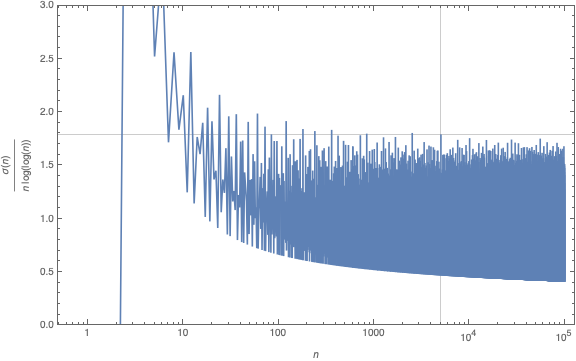The Riemann Hypothesis Says 5040 is the Last
Posted by John Baez
There are many equivalent ways to phrase the Riemann Hypothesis. I just learned a charming one from this fun-filled paper:
- Jeffrey Lagarias, Euler’s constant: Euler’s work and modern developments, Bull. Amer. Math. Soc. 50 (2013), 527–628.
Let be the sum of the divisors of , for example
In 1984 Guy Robin showed that the Riemann Hypothesis is true if and only if
for all , where is Euler’s constant
What makes this especially tantalizing is that in 1913 Gronwall showed that for any ,
except for finitely many . He did this using the Prime Number Theorem.
What’s the deal with 5040? Well, obviously, the sum of the divisors of this number is big compared to .
In fact, the only known natural numbers with
are
(I’m leaving and off this list because is funny for these.)
If there’s any other natural number with this property, the Riemann Hypothesis is false. If there’s not, it’s true!
In fact, Robin showed that if the Riemann Hypothesis is false there are infinitely many natural numbers with this property.
On Twitter, Nicolas Tessore kindly graphed the function for us:

You can see 5040 there, poking its head up, looking to the right, saying “Is there anyone out there as tall as me? Or almost as tall as me?”
Somehow this makes the Riemann Hypothesis very vivid to me.

Re: The Riemann Hypothesis Says 5040 is the Last
Some calculations, just for fun.